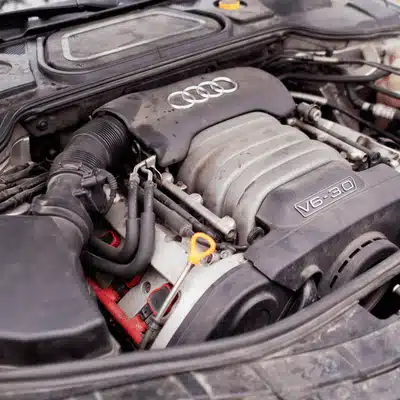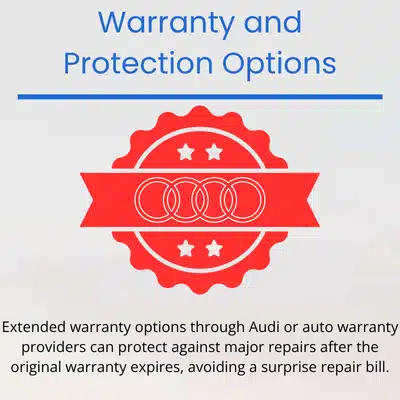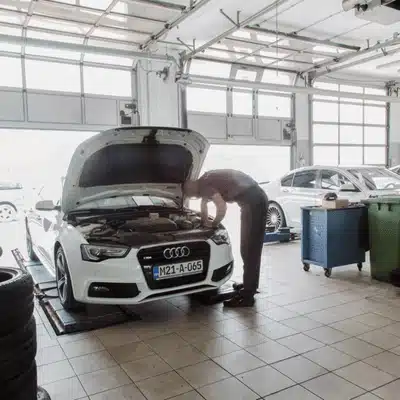Weekdays 8:00am-5:00pm Sat Closed Sun Closed

Audi is a respected German luxury automaker, but buyers wonder about long-term maintenance costs and which maintenance plan fits their budget. The short answer is yes – Audis cost more to maintain than average vehicles, and each maintenance type carries higher repair expense. This luxury brand demands premium parts, skilled labor, tight service schedules, and luxury prices, so the vehicle maintenance cost exceeds mainstream cars.
Knowing this upfront helps you budget and avoid shocks later. We'll explore why Audi costs run high, how regular maintenance checks service can head off repair issues, and how a routine lifts the car ownership experience.

Audi owners pay roughly $987 annually for maintenance services and repairs, compared to $652 for typical vehicles. This $335 difference stems from several key factors that define the luxury car ownership costs experience.
Premium parts drive much of the expense. Audi engineers complex systems with advanced technology that requires specialized components. When sensors fail or electronic modules malfunction, replacement parts cost significantly more than standard vehicle components. The brand uses high-quality materials throughout, from engine internals to suspension components.
Labor rates at authorized service centers run $150-200 per hour in most markets. Technicians need specialized training to work on Audi's sophisticated systems, which commands higher wages. Even independent European car specialists charge premium rates compared to general repair shops.
The brand's focus on performance and technology creates inherent complexity. Turbocharged engines, Quattro all-wheel drive, and advanced electronics all require more careful maintenance than simpler designs. This complexity translates directly into higher service costs and more frequent maintenance checks.

Reliability plays a major role in overall ownership costs. Audi ranks 28th out of 32 major brands in recent reliability ratings, earning just 3 out of 5 stars. This middling performance means more unscheduled repair bills and higher repair costs over time.
Audi owners visit repair shops about 0.8 times per year for unexpected issues—double the 0.4 average across all brands. Most of these visits happen at the dealership or a trusted independent shop. This higher repair frequency directly impacts your budget, especially once the warranty expires.
About 13 % of Audi problems qualify as severe, meaning major repairs costing thousands of dollars. Engine or transmission failures fall into this category. While not common, the repair severity risk is slightly above average compared to other brands.
These reliability challenges don't make Audis unreliable, but they do mean budgeting for more frequent shop visits. Following proper servicing schedules helps prevent many issues before they become expensive problems.
Audi recommends maintenance services every 10,000 miles or annually, whichever comes first. A basic oil change using synthetic oil costs $150-200 at the dealership, though independent shops may charge less.
Major services occur every 20,000 miles and include additional maintenance items like air filters, spark plugs, and brake fluid changes. Brake pads typically need replacement around 30,000-40,000 miles, with performance models wearing through them faster.
Higher mileage brings bigger expenses. Around 60,000-80,000 miles, expect transmission fluid changes and possibly carbon cleaning for direct-injection engines. Audi's TFSI engines accumulate carbon deposits that affect performance and fuel efficiency.
By 100,000 miles, major components may need attention. Water pumps, thermostats, and suspension parts commonly require replacement. Tires on performance Audis wear faster and cost more than economy car tires.
The key is planning for these maintenance items rather than being caught off guard by a large repair bill.

New Audis include a 4-year/50,000-mile warranty covering defects and failures, boosting reliability and easing owner worries. This bumper-to-bumper warranty handles most repair costs during early ownership, excluding normal wear items.
Audi now offers Signature Care maintenance coverage for the first 3 years or 30,000 miles on 2026 model-year vehicles. This covers scheduled services like oil changes and inspections within the recommended maintenance schedule, helping control early ownership costs.
Extended warranty options through Audi or auto warranty providers can protect against major repairs after the original warranty expires, avoiding a surprise repair bill. These replacement maintenance coverage plans vary in scope but typically cover engine, transmission, and electronic failures.
Third-party auto warranty providers such as Endurance or CARCHEX sometimes offer more flexible terms than manufacturer extensions. Compare coverage levels and costs carefully when choosing replacement maintenance coverage to prevent an even larger repair bill later.

Several approaches help manage Audi maintenance costs without compromising vehicle care. First, never skip scheduled maintenance services. Following proper service intervals prevents small issues from becoming expensive repairs.
Consider independent European car specialists for routine servicing once your warranty expires. These shops often charge 30-40% less than dealer repair services while maintaining quality standards. Look for technicians with Audi certification or extensive experience with the brand.
Use quality parts for repairs, but you don't always need genuine Audi components. Reputable aftermarket parts often perform identically at lower cost. However, stick with OEM quality for critical engine and safety components.
Keep detailed maintenance records. Documented car service history helps with warranty claims and maintains resale value, offsetting some long-term costs.
Budget for related expenses beyond repairs. Insurance rates run higher for luxury vehicles, and many Audis require premium fuel, affecting fuel efficiency costs. Factor these running costs into your total budget.
Audi maintenance costs exceed average vehicles by roughly $335 annually, placing them firmly in luxury territory. The brand's focus on performance and advanced technology requires premium parts, skilled technicians, and more frequent attention.
However, proper planning makes these costs manageable. Budget approximately $1,000 yearly for maintenance services and unexpected repairs. Use qualified independent shops when possible, follow maintenance schedules religiously, and consider extended warranty protection for peace of mind.
The powerhouse car brand delivers exceptional driving experiences that many owners find worth the extra maintenance bill. With realistic expectations and smart servicing choices, you can enjoy your Audi without breaking the bank.
Ready to find the best Audi service for your needs? Reach out to us today as we understand the brand's requirements. Proper car maintenance costs planning and expert vehicle maintenance services keep your Audi running at peak performance for years to come.

